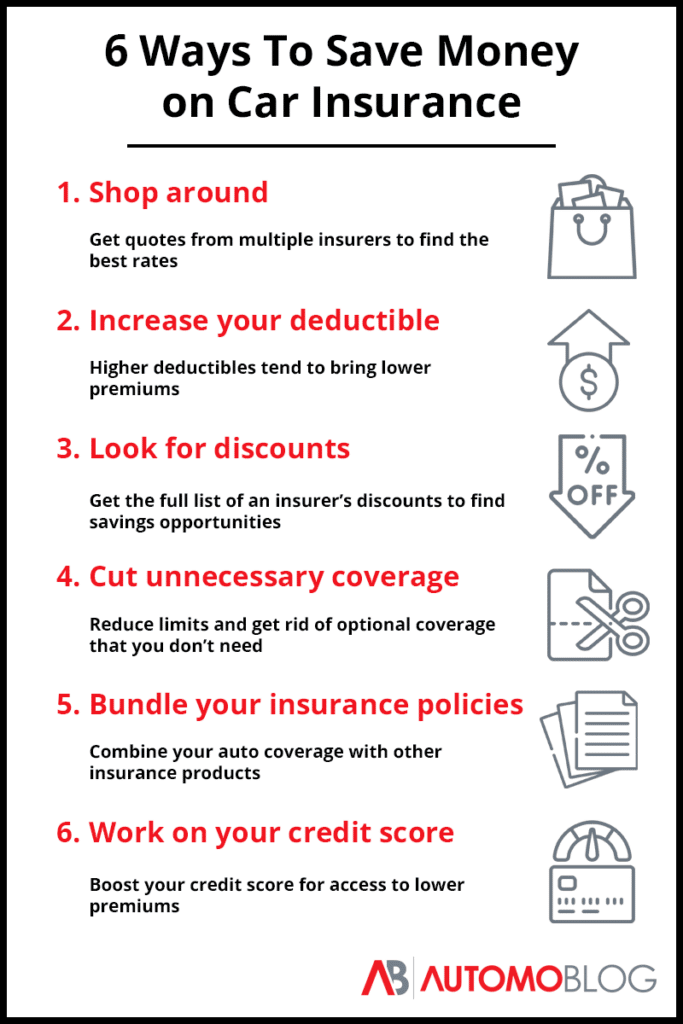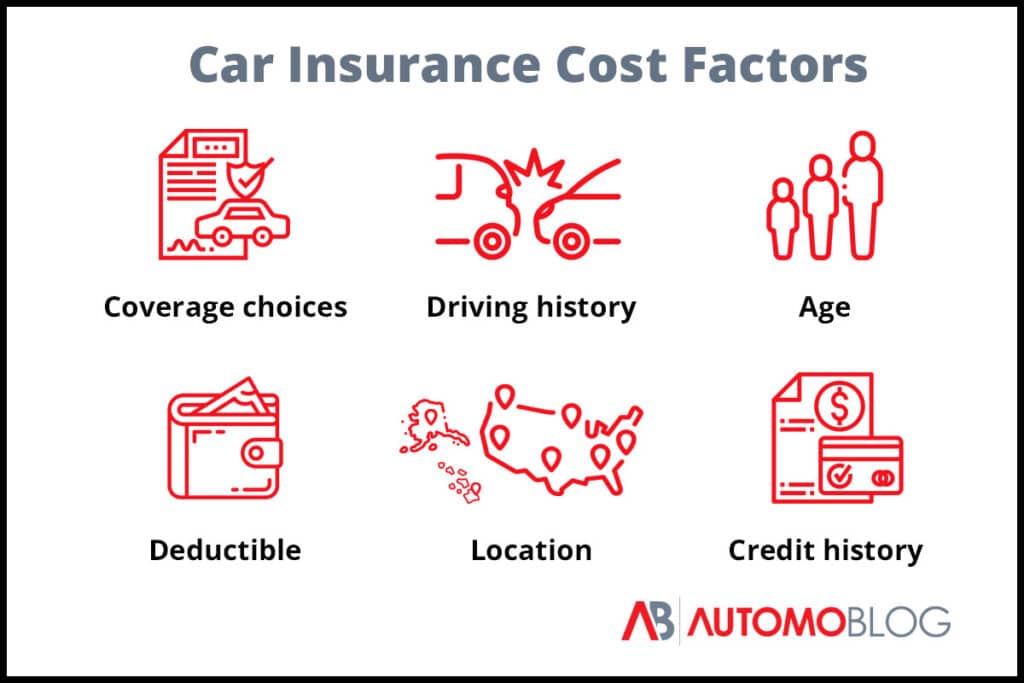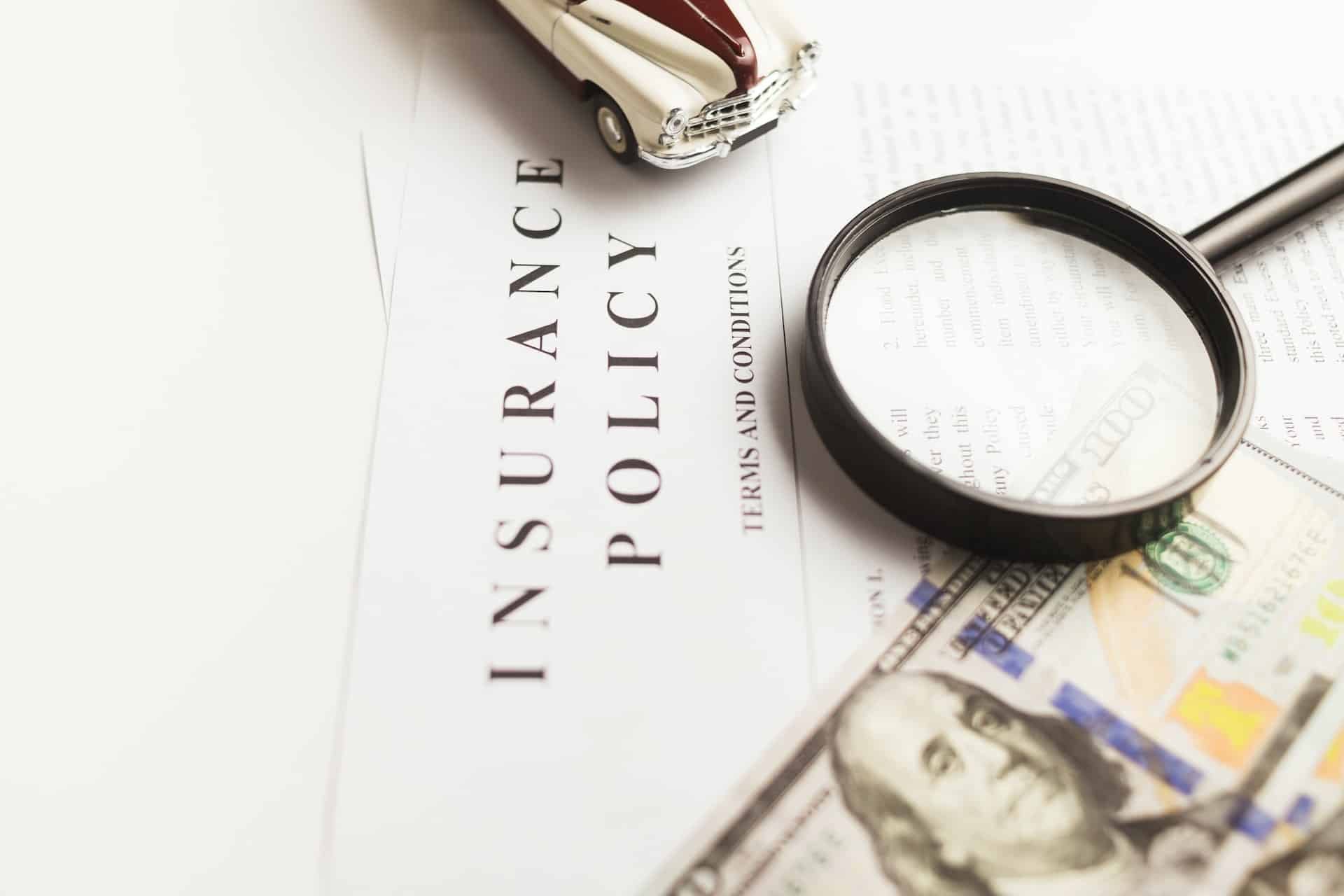- Dropping unnecessary coverage and increasing your deductible can lower your premium immediately.
- Working on your credit score and taking a defensive driving course can help you get more affordable rates down the road.
- Shopping around among multiple providers is essential to finding the best rates right now.
From 2021 to 2022, the average cost of auto insurance rose by almost 4% in the U.S. – and by nearly 60% in some locations. That means knowing how to save money on car insurance is more useful now than it’s ever been.
Our insurance experts put together this guide to show you how to get more affordable auto coverage from the best car insurance companies. You’ll also find information about how insurers charge to help you understand what goes into these costs.
How To Get Cheaper Auto Insurance
You have several options when it comes to reducing the cost of your auto insurance coverage. Some are more immediate or make more of an impact than others.
Best Ways To Reduce Your Car Insurance Premium

Shop Around For The Best Rates
Comparing rates from multiple insurers is essential to finding cheaper auto coverage. That’s because car insurance rates vary from one provider to the next, even for the same driver and car.
These days, it’s fast and easy to compare providers. You can get free quotes online from multiple insurers in just a few minutes to see which company offers you the best rates.
Raise Your Deductible
A low deductible means less to pay out of pocket when you need to file a claim. While that’s nice to have, the lower your deductible is set, the more you’re likely to pay for coverage.
If you want to save money on your auto policy, switching to a higher deductible is an immediate way to do it. Just remember that you’ll be responsible for that deductible if you need to file a claim. Don’t set your deductible so high that it puts you in a bad financial situation in the event of an accident or other covered loss.
Find Auto Insurance Discounts
Most car insurance companies offer at least a few discounts. These policy discounts can add up to significant savings quickly. Ask an insurance agent for the full list of discounts their company offers before signing up for your policy.
There may be some car insurance discounts that you are not eligible for, like discounts offered specifically to people of certain ages, professions, or affinity groups. For example, some companies offer good student discounts to younger drivers who maintain good grades in school.
However, other discounts are available to everyone. Most companies offer discounts for having standard safety features like anti-lock brakes and anti-theft devices on your vehicle. You can also typically get lower premiums by switching to paperless billing or paying for your car insurance policy upfront instead of across monthly payments.
Get Rid of Coverage You Don’t Need
In general, it’s good to have as much insurance coverage as you can afford to protect your personal finances. But when you’re looking to cut the cost of your auto insurance, cutting unnecessary coverage and reducing coverage limits can reduce your premium immediately.
If you have an older car that isn’t worth much money, for example, you may not need high limits on comprehensive coverage or collision coverage – or need them at all. You may even want to consider a minimum coverage plan if you have full coverage.
Even if you have a new car, it’s worth considering which optional coverages you really need. Eliminating options like trip interruption or rental car coverage can help get your insurance costs down.
Bundle Multiple Policies
Bundling discounts are one of the most popular car insurance discounts in the industry. Insurers typically reward policyholders who combine their auto coverage with other insurance products like life insurance, renters insurance, homeowners insurance, or umbrella coverage with an across-the-board discount.
If you have other types of insurance with other companies, consider getting them through your auto insurance provider instead – or vice versa. Combining your insurance policies has the added benefit of making it a little simpler to manage all your policies.
Improve Your Credit Score
While the other ways of getting cheaper car insurance are more immediate, improving your credit score may result in the most substantial savings. In states where companies are allowed to use your credit history as a factor, your score makes a big difference. According to data from Quadrant Information Services, drivers with poor credit pay up to 80% more for auto coverage on average than drivers with good credit.
Consistently making your minimum payments on credit cards, auto loans, and other types of debt will raise your score over time. Tactics like paying down debts more aggressively can help bring it up more quickly. Once your score has improved, you may be able to find lower rates.
Other Ways To Get Cheaper Car Insurance
The six methods listed above are some of the most foolproof ways to get cheaper auto premiums. However, there are a few additional options to consider that may work well for some motorists.
Consider Usage-Based Coverage
Usage-based insurance policies charge drivers by the mile rather than a flat rate. Remote workers, retired people, and others who don’t need to put a lot of miles on their car every month may benefit from a low-mileage discount after choosing usage-based coverage.
However, if you regularly commute to work or otherwise drive more than a few hundred miles a month, a usage-based policy will probably be more expensive than flat-rate insurance. Consider the number of miles you actually drive each month before signing up for one of these policies.
Try a Telematics Program
Most of the top auto insurance companies offer some kind of telematics-based policy. These programs use an app on your mobile phone to track your mileage and driving behavior.
Consistently practicing good driving habits like obeying the speed limit or braking softly can get you cheaper car insurance premiums. Many insurers even give you a discount simply for signing up.
However, unsafe habits such as checking your phone while driving, speeding, or taking turns too quickly can make your insurance even more expensive. Some companies penalize drivers for certain activities that may be necessary for you, like driving at night or during rush hour. Be realistic about your driving habits when deciding if a telematics program is right for you.
Take a Defensive Driving Course
Many insurance companies offer a discount for completing an approved safe driving course. Passing one of these courses could be a good way to save money on your auto insurance policy. It could also make you a safer driver, which could be reason enough on its own to sign up for one.
However, you’ll also want to consider the cost of the course. Some states offer low-cost courses, but some can cost several hundred dollars. This may be more than you actually save with a safe driver discount.
What Makes Up the Cost of Car Insurance?
Auto premiums vary between drivers and providers because rates are based on a number of factors. Companies weigh these factors differently from each other, which is why it is essential to get multiple quotes when you shop for car insurance.

While there are many factors that influence the cost of your car insurance premium, these are some of the most important:
- Coverage: The coverage options and coverage limits you choose are one of the main cost factors in your insurance. In general, more coverage means higher premiums.
- Driving history: Drivers with a clean driving record have access to the lowest rates. Any accidents or traffic violations on your record can result in higher premiums.
- Age: Young drivers and especially teens typically pay substantially higher rates for auto insurance than drivers in other age groups.
- Deductible: In most cases, the lower you set your deductible, the higher you can expect your annual premiums to be.
- Location: Differences in government regulations and local risk factors mean that average insurance rates vary between ZIP codes.
- Credit score: In some states, it is illegal for insurers to use your credit report as a factor in your premiums. But in the vast majority of states, drivers with lower credit scores can pay significantly higher rates than drivers with good credit.
Save Money on Car Insurance: Conclusion
There are some factors in your auto coverage rates that are out of your control. But you still have a few ways that you can save money on car insurance, both in the short and long term. Some options can work for everyone, while others are worth more careful consideration.
Above all else, being a smart shopper and a responsible, good driver is the most essential part of consistently getting the cheapest auto insurance you can. Make sure to compare car insurance quotes from multiple providers to find the best rates before signing up for a policy.
Save Money on Car Insurance: FAQ
In the following section, you’ll find answers to some of the most frequently asked questions about saving money on auto insurance.
Who actually has the cheapest auto insurance?
State Farm typically has the cheapest auto insurance available to everyone. While USAA tends to have cheaper rates overall, the company’s coverage is only available to military members, veterans, and their families, meaning most drivers aren’t eligible.
How can I spend less money on insurance?
You can spend less money on insurance immediately by increasing your deductible, applying discounts, reducing coverage and coverage limits, and bundling insurance policies. In the long term, you can work to improve your credit score, take a safe driving class, or consider usage-based or telematics-based insurance policies. Shopping around and getting quotes from multiple insurers is also a good way to spend less on your auto policy.
Is it cheaper to pay for car insurance monthly or yearly?
It is often cheaper to pay for car insurance yearly rather than monthly. That’s because many providers offer a discount for paying your entire premium upfront. However, not all insurers offer this discount, so this isn’t always the case.
Is it cheaper to pay car insurance every six months or monthly?
It’s usually cheaper to pay for your car insurance every six months than it is to pay for it monthly. Many insurance companies – but not all – give you a discount for paying for your entire policy upfront instead of across monthly payments.
Why is car insurance so expensive?
Car insurance is expensive in many places right now because of rising costs that are related to claims payouts. The costs of medical care and auto repair have gone up significantly in recent years, increasing the average claims payout. In recent years, the number of auto accidents has been on the rise, meaning insurers also have to pay out more claims.
Is it better to pay out of pocket or use insurance?
Whether it’s better to pay out of pocket or use insurance depends on the cost of repairs and the amount of your deductible. If the cost of a repair is less than or even slightly more than your deductible, it is probably better to pay out of pocket since filing an insurance claim could raise your rates.




